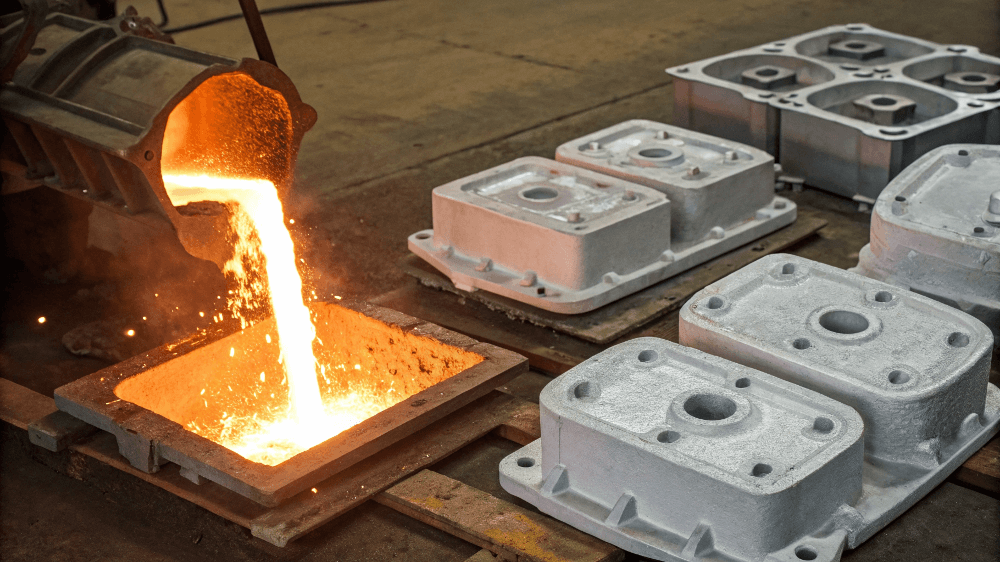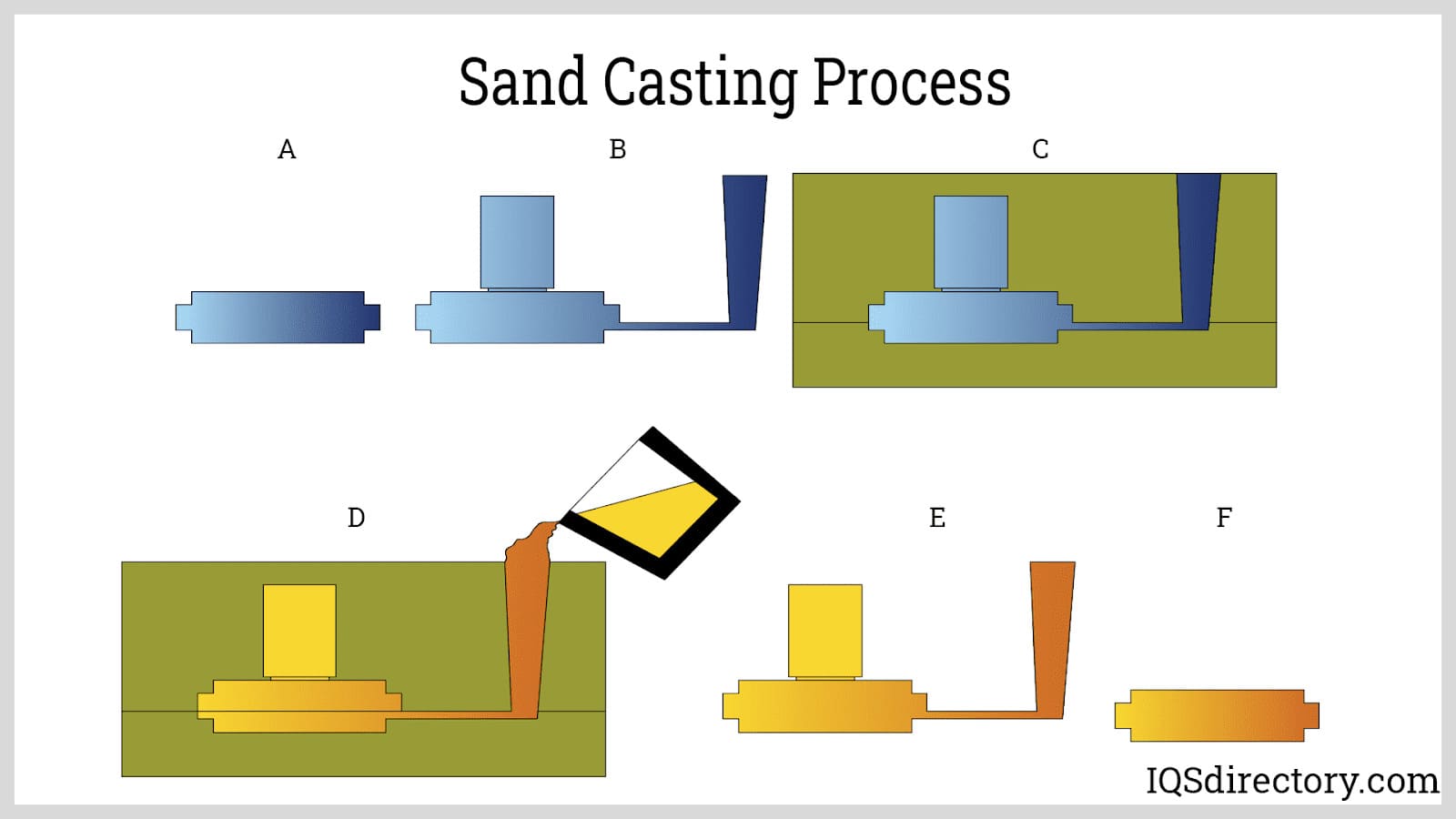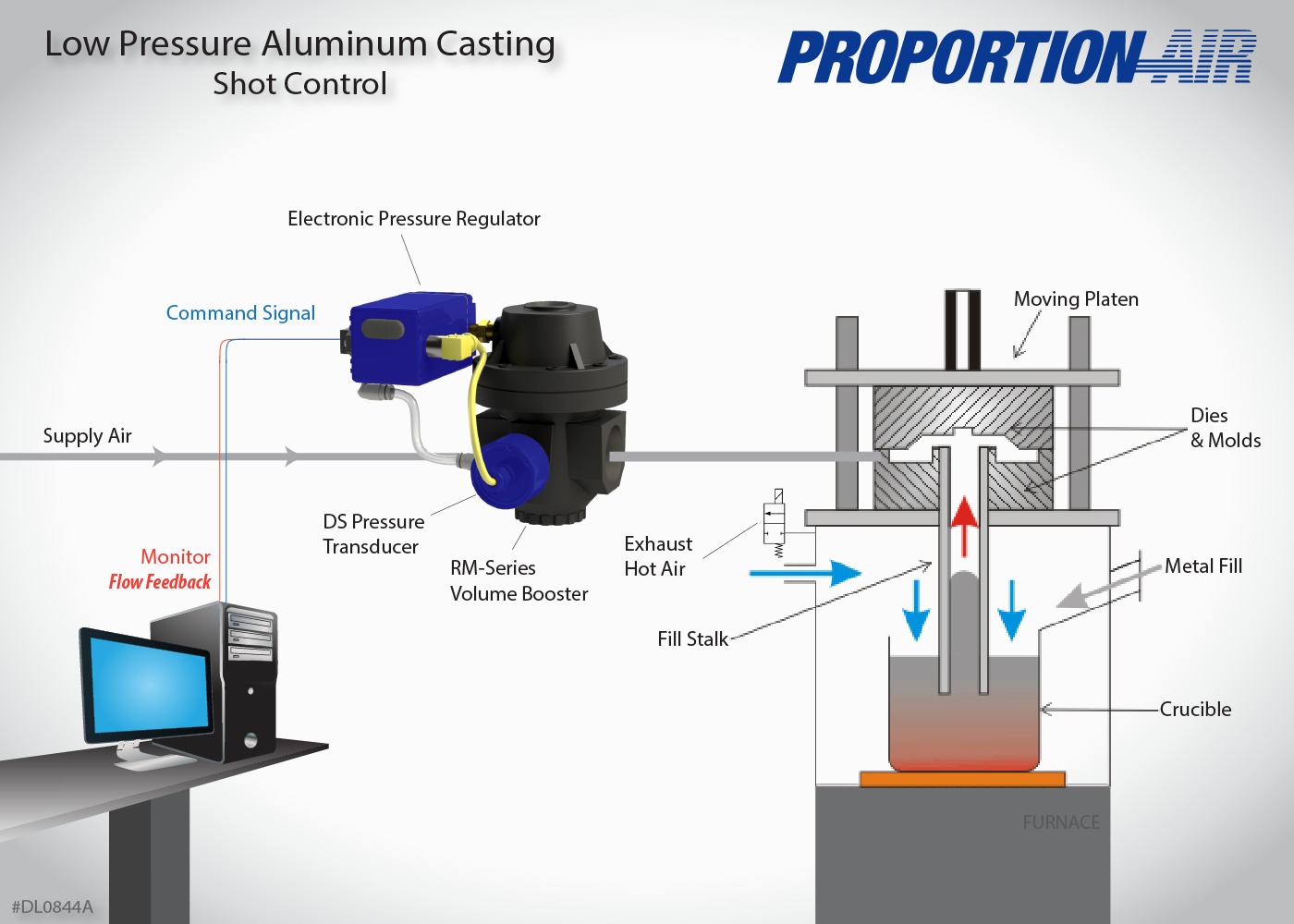A Comprehensive Guide to the Methods Used in Aluminum Foundry Workflow
Aluminum Foundry procedures employ various casting techniques, each with distinctive procedures and applications. Recognizing these techniques is crucial for optimizing production and accomplishing wanted product residential or commercial properties. From sand spreading to die spreading, the options readily available can significantly influence effectiveness and cost. As modern technology advances, so also do these techniques, motivating a better assessment of their benefits and constraints. The implications of these growths necessitate more exploration.
Introduction of Aluminum Spreading Techniques
Aluminum spreading strategies include a range of techniques used to shape molten Aluminum right into desired types. These strategies are pivotal in the manufacturing and design sectors, providing flexibility and effectiveness. Significant methods consist of die spreading, which employs high-pressure to infuse Aluminum into molds for precision parts, and gravity casting, where molten Aluminum is put into molds intoxicated of gravity, enabling for larger, less complicated forms. Financial investment spreading, another method, includes developing a wax pattern coated in ceramic, providing high dimensional precision for intricate designs. Additionally, permanent mold and mildew spreading makes use of reusable mold and mildews, enhancing production efficiency and decreasing waste. Each technique deals with specific applications, balancing elements such as cost, manufacturing volume, and material properties. As sectors progress, innovations in these casting techniques remain to enhance the high quality and performance of Aluminum elements, positioning them as essential procedures within modern-day manufacturing.
Sand Spreading: Process and Applications
Sand spreading is a widely made use of method in the Foundry sector, known for its simplicity and versatility. Aluminum Foundry. This process involves developing a mold and mildew from a mixture of sand and a bonding agent, normally clay. The mold and mildew is formed around a pattern, which is a reproduction of the preferred end product. As soon as the mold is ready, liquified Aluminum is put right into the dental caries, permitting it to strengthen into the preferred shape
One of the main advantages of sand spreading is its capability to produce large components and intricate geometries, making it appropriate for different applications, including automobile parts, equipment parts, and ornamental things. Furthermore, sand spreading can suit various Aluminum alloys, boosting its adaptability. The process is cost-efficient for reduced to tool manufacturing runs, as it does not require costly tooling. Generally, sand casting continues to be a fundamental method in Aluminum Foundry procedures due to its performance in conference diverse production demands.
Die Casting: Advantages and Limitations
While die spreading is commonly compared to sand spreading, it uses unique advantages and constraints that make it suitable for details applications in the Aluminum Foundry industry. One substantial advantage of die spreading is its ability to produce intricate forms with high dimensional accuracy and superb surface finish. This procedure is particularly valuable for automation, as it enables faster cycle times and minimized labor expenses. Additionally, die casting decreases material waste, boosting general performance.
Pass away casting likewise has constraints. The initial tooling prices are fairly high, making it much less feasible for little manufacturing runs. The process is finest fit for steels with reduced melting points, which can restrict material selections. Die spreading is additionally limited relating to the optimum size of the parts created, as bigger parts may need different approaches. Balancing these elements is crucial for identifying the proper application of die spreading in the Aluminum Foundry field.
Financial Investment Casting: Accuracy and Information
Financial investment spreading is a very precise manufacturing process that permits complex layouts and great details in Aluminum parts. This technique uses considerable benefits, consisting of boosted dimensional precision and lowered machining requirements. Its applications cover different industries, highlighting its adaptability and efficiency in creating intricate components.
Refine Introduction
The financial investment spreading procedure is renowned for its capacity to create high-precision components and intricate shapes. This approach starts with producing a wax pattern, which is after that covered with a ceramic shell. Once the shell sets, the wax is thawed away, leaving a precise cavity for the molten steel. The Aluminum is put right into this tooth cavity, catching the fine information of the initial pattern. After cooling, the ceramic shell is escaped, exposing the cast component. Any kind of essential completing work, such as machining or surface area treatment, is carried out to achieve the wanted specs. This process is specifically advantageous for intricate geometries that are challenging to achieve via typical spreading techniques, ensuring both high quality and accuracy in the end product.
Advantages of Accuracy
Precision in financial investment casting supplies considerable benefits, making it a favored selection for manufacturing intricate elements. This method enables the production of elaborate forms with tight resistances, decreasing the need for extensive machining and lessening material waste. The capability to attain high dimensional precision equates to a premium fit and surface, boosting the overall high quality of the end product. In addition, investment casting enables for the incorporation of fine information, which is vital for parts calling for complex layouts. The process likewise sustains making use of various Aluminum alloys, additionally increasing its applicability. Overall, the precision used by financial investment spreading not only enhances the visual and useful qualities of elements however likewise adds to improved efficiency in production cycles.
Applications in Market
While numerous making procedures exist, financial investment spreading stands apart for its flexibility throughout numerous sectors, specifically in sectors requiring high accuracy and detailed components. This casting method is commonly made use of in aerospace, automotive, and medical fields, where intricate designs and limited resistances are crucial. Aerospace parts profit from investment casting's capacity to generate complicated geometries that decrease weight without sacrificing structural stability. Likewise, the automobile industry uses this method to make engine components that need durability and accuracy. In the clinical market, investment spreading allows the manufacturing of surgical instruments and implants that have to satisfy stringent high quality standards. On the whole, financial investment casting greatly improves product efficiency and reliability, making it an important strategy in modern manufacturing applications.
Contrast of Casting Approaches
 The comparison of casting techniques discloses distinct benefits and applications throughout various methods - Aluminum Foundry. Sand spreading is typically commemorated for its flexibility and cost-effectiveness, while die casting is recognized for its efficiency and accuracy in generating high volumes. Investment casting, previously talked about, showcases its one-of-a-kind ability to produce elaborate styles, even more highlighting the varied capabilities of each method in Aluminum Foundry procedures
The comparison of casting techniques discloses distinct benefits and applications throughout various methods - Aluminum Foundry. Sand spreading is typically commemorated for its flexibility and cost-effectiveness, while die casting is recognized for its efficiency and accuracy in generating high volumes. Investment casting, previously talked about, showcases its one-of-a-kind ability to produce elaborate styles, even more highlighting the varied capabilities of each method in Aluminum Foundry proceduresSand Spreading Advantages
Sand spreading offers several benefits when compared this website to other casting techniques, making website here it a preferred choice in different manufacturing applications. One of the main advantages is its reduced price, as the materials called for, such as sand and steel, are inexpensive and conveniently offered. Furthermore, sand spreading enables better style versatility, making it possible for the manufacturing of complicated shapes and big components that may be challenging to achieve with various other strategies. The process likewise fits a broad range of metal alloys, including Aluminum, improving its adaptability. Sand mold and mildews can be conveniently repaired or modified for succeeding casts, making it reliable for both small and large production runs. Overall, these advantages contribute to sand casting's popularity in the Foundry industry.
Pass Away Casting Techniques
Die spreading methods stand apart as a highly reliable method for producing steel parts, specifically when compared to traditional casting methods like sand casting. This procedure includes forcing molten Aluminum right into a mold under high pressure, resulting in specific measurements and a smooth surface coating. Unlike sand casting, which requires considerable ending up job, die casting decreases post-production processing, enhancing total performance. Furthermore, die casting can suit complicated geometries, permitting complex designs that would be testing to accomplish via other approaches. The speed of manufacturing is an additional advantage; pass away casting can create huge quantities of parts in a shorter timeframe. On the whole, the combination of style, precision, and efficiency versatility makes pass away casting a preferred choice in contemporary Aluminum Foundry procedures.
Investment Spreading Applications
Investment casting, usually referred to as lost-wax spreading, uses distinctive benefits over other casting approaches, particularly with respect to precision and surface finish. This method enables for the development of complex forms and fine details that are challenging to accomplish with sand or die casting. Additionally, investment casting produces parts with premium dimensional precision, decreasing the requirement for comprehensive machining. Its versatility makes it suitable for numerous markets, consisting of aerospace, vehicle, and medical devices, where premium components are essential. Compared to pass away spreading, which can be limited by mold intricacy, investment casting excels in producing intricate geometries without jeopardizing structural honesty. Subsequently, the option of investment spreading comes to be progressively favorable for applications demanding high efficiency and dependability.
Quality Assurance in Aluminum Foundry Operations
Just how can Aluminum factories guarantee the best quality in their items? Executing strenuous high quality control measures is crucial. he has a good point Factories typically begin by establishing clear specs for the Aluminum alloys used, guaranteeing they meet market criteria. Constant surveillance during the melting and putting processes assists identify any inconsistencies from desired chemical make-ups.
Aesthetic examinations and non-destructive testing approaches, such as ultrasonic or X-ray evaluations, are commonly employed to discover inner flaws or inconsistencies in spreadings. Furthermore, analytical process control strategies track production information, enabling early identification of prospective concerns.
Normal training and certification of workers in high quality guarantee techniques are vital for maintaining high standards. Implementing feedback loops from customers can help foundries refine their processes and improve product quality. By adhering to these practices, Aluminum foundries can regularly provide top notch items that go beyond or fulfill consumer assumptions.
Future Patterns in Aluminum Casting Innovation
Improvements in Aluminum spreading modern technology are positioned to reshape the industry landscape, building upon established high quality control practices. Innovations such as additive production and clever Foundry options are emerging, allowing enhanced design flexibility and lowered waste. The combination of synthetic knowledge and artificial intelligence in procedure monitoring permits real-time modifications, enhancing efficiency and item quality.
Sustainability continues to be a crucial emphasis, with a focus on reusing scrap Aluminum and reducing power consumption. Advanced alloy solutions are being developed to maximize efficiency while reducing ecological impact. The fostering of automated systems, including robotics for pouring and handling, assures to improve workplace safety and security and accuracy.
Additionally, electronic twins are getting traction, enabling online simulations that facilitate much better decision-making and anticipating maintenance. As these fads develop, they will likely produce an extra efficient, lasting, and highly advanced Aluminum casting market, establishing brand-new standards for high quality and efficiency.
Frequently Asked Inquiries
What Security Actions Should Be Taken in Aluminum Foundry Operations?
In Aluminum Foundry operations, essential precaution consist of individual safety devices, correct air flow, normal training, risk analyses, emergency situation preparedness, and adherence to procedures to minimize threats connected with molten metal and heavy equipment.
How Is Recycled Aluminum Used in Foundry Processes?
Recycled Aluminum is typically used in Foundry procedures to lower ecological influence and manufacturing costs. It undergoes melting and refining, allowing manufacturers to create premium products while saving energy and reducing waste in the Aluminum lifecycle.
What Equipment Is Vital for Aluminum Casting?
Necessary equipment for Aluminum casting consists of heaters for melting, mold and mildews for shaping, putting ladles, cooling down systems, and ending up devices. Each part plays a critical function in making sure the efficiency and high quality of the casting process.
How Do Environmental Regulations Influence Aluminum Foundries?
Ecological guidelines significantly influence Aluminum shops by enforcing limits on discharges and waste administration. Compliance calls for investment in cleaner technologies, which can increase operational costs yet eventually advertises sustainability and minimizes the ecological impact of the market.

What Prevail Defects in Aluminum Castings and Their Solutions?
Typical issues in Aluminum spreadings consist of surface, porosity, and shrinking flaws. Solutions involve optimizing melt quality, managing air conditioning prices, and utilizing correct mold style, making certain much better honesty and efficiency of the last cast products.
 Significant strategies consist of pass away casting, which employs high-pressure to inject Aluminum into molds for accuracy components, and gravity spreading, where liquified Aluminum is put right into mold and mildews under the influence of gravity, enabling for bigger, much less complicated forms. While die spreading is usually compared to sand casting, it provides unique benefits and restrictions that make it appropriate for certain applications in the Aluminum Foundry market. Sand spreading is usually commemorated for its versatility and cost-effectiveness, while die spreading is acknowledged for its effectiveness and precision in creating high volumes. Die casting techniques stand out as a very reliable method for producing metal parts, especially when compared to conventional casting techniques like sand casting. Compared to pass away casting, which can be restricted by mold and mildew complexity, investment casting succeeds in generating complicated geometries without jeopardizing structural integrity.
Significant strategies consist of pass away casting, which employs high-pressure to inject Aluminum into molds for accuracy components, and gravity spreading, where liquified Aluminum is put right into mold and mildews under the influence of gravity, enabling for bigger, much less complicated forms. While die spreading is usually compared to sand casting, it provides unique benefits and restrictions that make it appropriate for certain applications in the Aluminum Foundry market. Sand spreading is usually commemorated for its versatility and cost-effectiveness, while die spreading is acknowledged for its effectiveness and precision in creating high volumes. Die casting techniques stand out as a very reliable method for producing metal parts, especially when compared to conventional casting techniques like sand casting. Compared to pass away casting, which can be restricted by mold and mildew complexity, investment casting succeeds in generating complicated geometries without jeopardizing structural integrity.